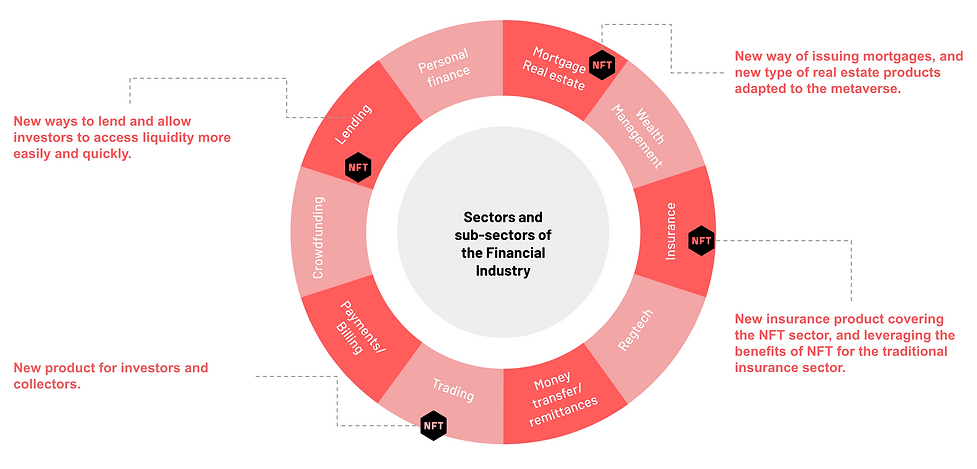NFTs - Beyond Fine Arts
In 2021, NFTs were the “talk of the town”. But today and tomorrow? Well, as our last Thought Leadership demonstrates it, the "talk" is far from over !
In 2021, NFTs were the “talk of the town” and had gained a lot of attention. Beyond the hype of NFT in the art sector, use cases across various sectors, including the financial industry, are emerging as NFT increases in maturity.
In this paper we dive further into the relevance of NFT by highlighting emerging use cases in the financial services sector, showcasing that NFT in the industry has moved beyond the realm of theoretical applications.
Currently, the NFT ecosystem is mostly dominated by emerging technology players and had a total market capitalization estimated at $2B USD as of August 2022, which is still relatively small compared to the total crypto market capitalization valued at approximately $1,118B USD.
However, as the technology continues to evolve and the number of use cases increases, a growing number of non-crypto, “traditional players” in the financial sector (and beyond!) have shown interest, with some being directly involved and experimenting with NFTs.
NFT stands for non-fungible token and is often described as a blockchain-based asset that can be used to represent ownership of unique items. As such, it presents the same intrinsic characteristics of blockchain technology, that is: immutable, decentralized, traceable, transparent, and near real-time. On top of that, NFT bring its own set of characteristics, such as non-fungibility, uniqueness, scarcity, verifiability, and programmability.
In an era of increased digitization of financial services and with a decreasing use of cash for payment, NFTs are clearly relevant to the industry, with the potential to transform the way financial services firms are conducting business, to improve operational costs, and to create new lines of products that did not exist before.
In short, NFTs present opportunities to innovate from within and gain in terms of operational efficiencies, but also lead the way to new products and services being created (from outside the traditional organizations/system), and in turn influence the financial industry that must adapt to demand.
Learn more here !






